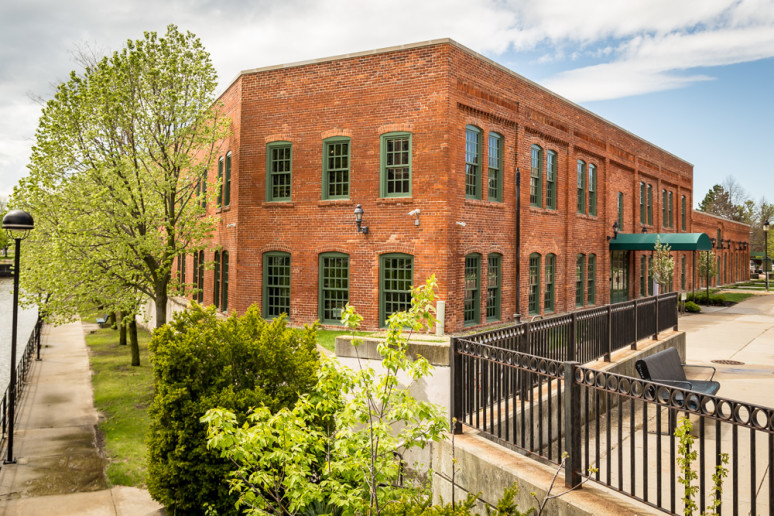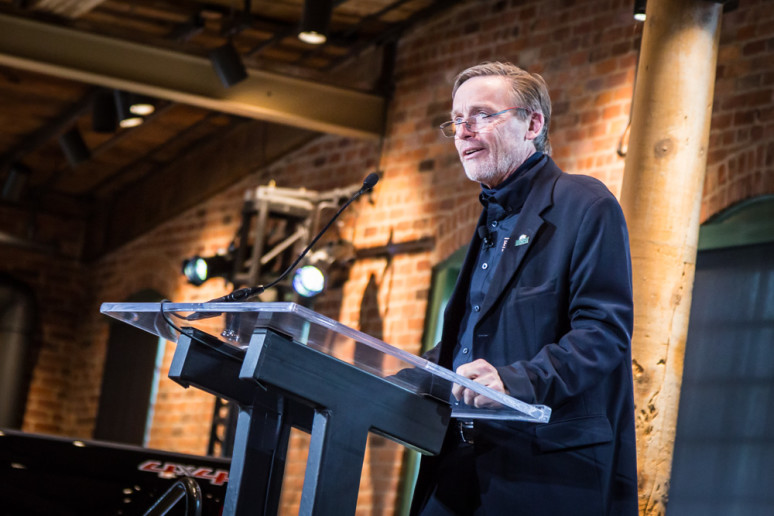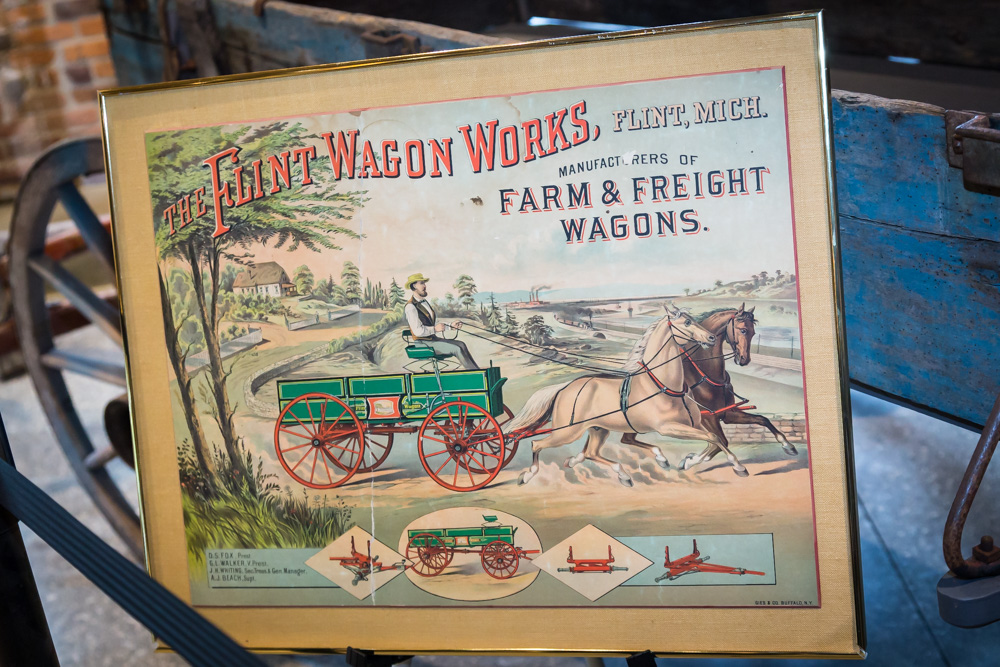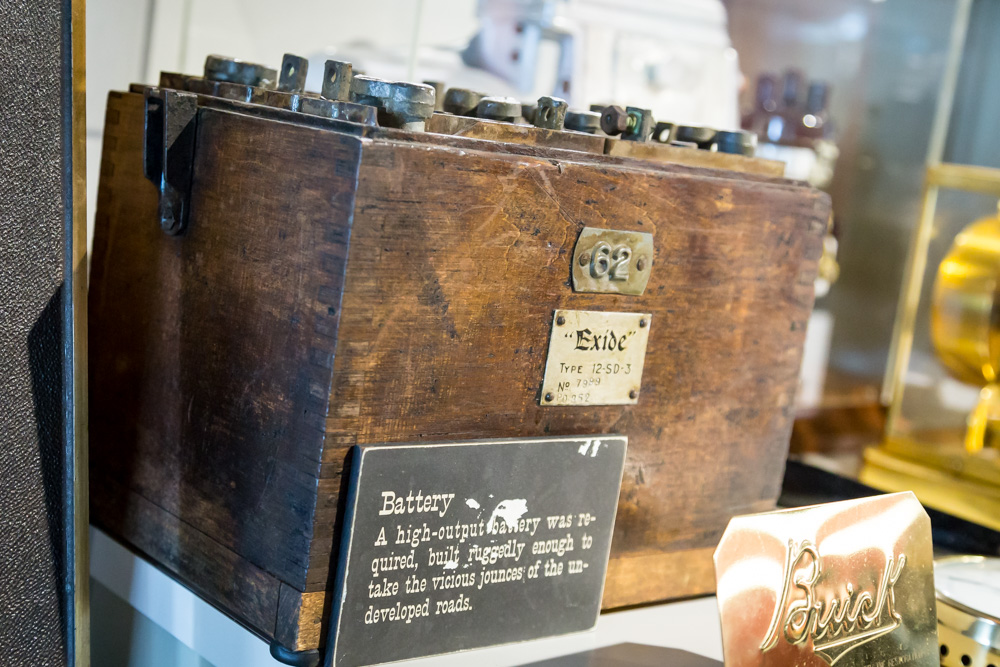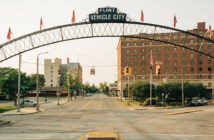On May 1, Durant-Dort Factory One in historic Carriage Town reopened after what General Motors Executive VP, Mark Reuss, described as “a long journey” from purchasing the building in 2013. The Factory One building was a dilapidated piece of history the community could have lost. Instead, after strenuous renovation, and through collaboration between GM and Kettering University, Factory One was transformed into an interactive and innovative hub in Downtown Flint.
Along with many community members, Factory One Operations Manager, Kevin Kirbitz, was on hand for the grand opening ceremony to share details of the renovation process. Kirbitz recounted that when GM bought the building, the first restoration phase included work on every major area: the walls, windows, leaking roof, and foundation. “Masons replaced over 17,000 color-matched bricks,” Kirbitz stated. Important to the project was maintaining and preserving the historic site – including keeping the vintage structural beams that inspired Mark Reuss, Executive Vice President of General Motors, upon his initial discovery of the building – while adding discreetly modern amenities that “connect the industry’s past, present and future.”
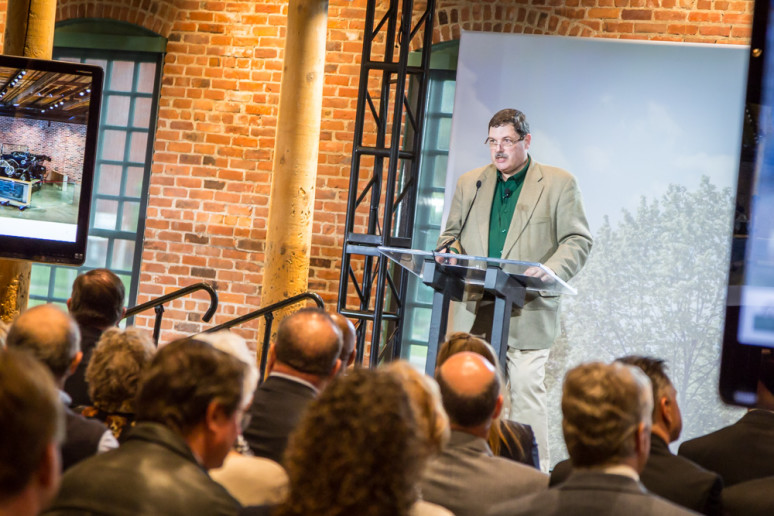
“The archive is a location in Flint where community members can access this wealth of information.”
Mark Reuss
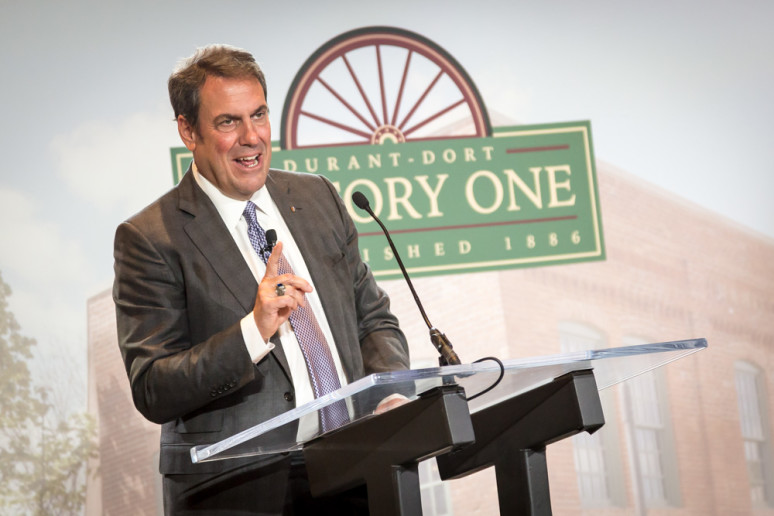
“Factory One is once again an asset to this community, and will be for generations to come.”
Kevin Kirbitz
Factory One can claim to be the birthplace of General Motors and will now house its rich history. Kirbitz offered evidence through a historical artifact housed in the Kettering archive’s new home in Factory One. In a 1923 dealer newsletter, W.C. Durant acknowledged Factory One with a caption over a photo of the building that read, “Big oaks from little acorns grow. This is the factory where W.C. Durant began his manufacturing enterprises.” While GM was never technically producing in Factory One, it is where Durant and J. Dallas Dort formed the Flint Road Cart Company. By the turn of the century, the company, renamed Durant-Dort Carriage Company in 1895, was said to be the leading volume producer of horse-drawn vehicles in the United States, according to David Buick’s Marvelous Motor Car, a book on the subject written by Lawrence R. Gustin and Kevin Kirbitz. To appeal to different demographics, Flint Road Cart expanded to produce other vehicles in different local factories. The success of the carts built in Factory One, along with several related Flint businesses, lead to Flint being named “Vehicle City” in 1901.
Not only were they industry pioneers, but the way they did business was also innovative; according to Kirbitz,“they developed a business model that would propel the business world.” The company eventually became the largest cart manufacturer in Flint and then, the largest in the nation.
The vision of Factory One is to reflect the innovation and success of the past, to display the Kettering Archives and to promote future innovations. Mark Reuss recounted that when Kettering University President, Dr. Robert McMahan, offered to move the school’s archive to Factory One, the true vision for the building was solidified. The archive offers the community over a century of automotive history in a location where much of that history actually began. “Kettering’s archive is filled with incredibly rich, rare pieces,” McMahan states. Founded in 1974, it houses over 100,000 items including documents, photos and artifacts from the carriage years and early auto industry. Included in the collection are the Billy Durant papers, the J. Dallas Dort papers, William Ballenger, Flint Wagon Works, General Motors, and AC Sparkplug. It also includes the history of Charles Kettering’s contributions to the auto industry, including a model of the first starter he created, which is how he got his start with General Motors.
Kettering Archives will operate under the direction of Dr. Greg Miller, who McMahan describes as a nationally recognized historian and archivist with deep ties to Flint and the auto industry. Dr. Miller, a Mt. Morris native, was appointed as the Director of Special Collections and University Archives in September and called it “a dream come true.” Although he left Flint in 1977, his family has a long history with the auto industry. His parents were both “shoprats,” his father worked in Fisher One and his mother in Fisher, Grand Blanc. “I have a typical Flint story,” Miller says. “All of my relatives worked for GM because that’s what people did then. That was how you got ahead in Flint.” He also maintained an interest in the auto industry through college, writing his first undergraduate paper on the Sit-Down Strikes of 1936-1937, and his PhD dissertation on the labor strikes in eastern Ohio.
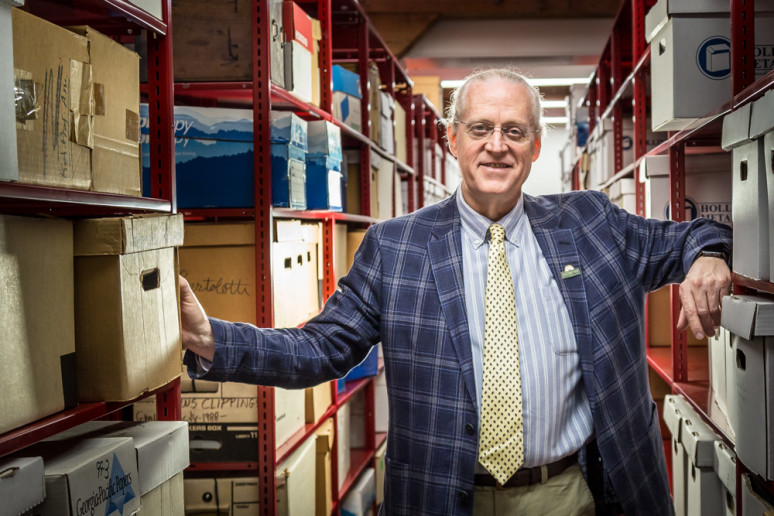
“My main hope is that we become one of the premier stops for historians of the early auto industry.”
Dr. Greg Miller
According to Miller, the Move to Factory One brought the archive, which used to be housed in three different rooms in two separate buildings, into one easily-accessible collection. The archives are now located in a climate-controlled room, the only room in Factory One with an enclosed ceiling. It has its own heating, ventilation and air conditioning system in order to maintain 65 degrees and 35 percent humidity, to reduce deterioration of the pieces. Papers and photos are especially sensitive to incorrect or inconsistent humidity and temperature. Damage ranges from curling edges of photos, to Miller’s discovery of nitrogen film negatives that had decomposed. “They did not smell good, they were sticky and you couldn’t see the images anymore,” he recounts. The new environment at Factory One will help lessen deterioration as Miller works to digitize the images.
Before the archive was moved to Factory One, the team focused on identifying what was central to the collection, in order to show its greatest strengths. Miller says that steps were taken even before he was brought on board, such as finding a new home for 1,380 boxes of automotive patents, because a lot of them were already available online. They have retained the Kettering archive’s strongest collection – early history of the Flint auto industry, and what Miller calls “a really strong collection” on the history of Flint. “This collection has a lot of early stuff from the formation of Chevrolet, because that’s what Billy Durant used to leverage back into GM,” Miller says, explaining that there is a complicated, rich history of the auto industry that finds it source in money initially generated in Flint. The collection also has what Miller believes is probably the oldest cranking battery, which sits atop Charles Kettering’s very unique office set, another highlight of the collection.
“My main hope for the Kettering archives is that we become one of the premier stops for historians of the early auto industry,” Miller shares. “In the state of Michigan, I would like to see us move up behind the Benson Ford Research Center at the Henry Ford – they are really strong, of course, on the history of Ford; but since 1908, we have been a General Motors town and we have the strongest collection for that.” Miller has already been receiving requests not only from individual researchers, but also from the History Channel, which is looking to produce a new series on the history of the automobile, as well as a documentary team studying the history of the Klu Klux Klan in the area, and the Kettering archives have the relevant photos.
Factory One is focused not only on preserving history, but also on the future of students and the Flint community. According to Mark Reuss, the archive creates a location in Flint where community members can also access this wealth of information. “They know that they will be reliant on the next generation of innovators to push the industry forward, and they want to support those students,” Reuss says. Factory One is located near Kettering, University of Michigan-Flint, Mott Community College and Baker College. The building and archive will be accessible to anyone in the community and to scholars around the world.
Factory One also is a workspace for GM employees, with conference rooms and offices on the second floor and a large meeting room that can accommodate up to 300 people. Kevin Kirbitz hinted that they already have a program planned for August during Back to the Bricks.
For information or reservations to access the archives, call 810.777.5101 or visit gmfactoryone.com.
Photography by Eric Dutro


